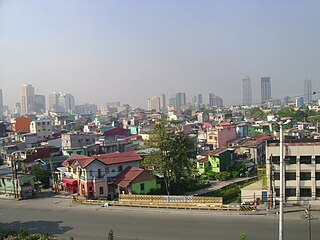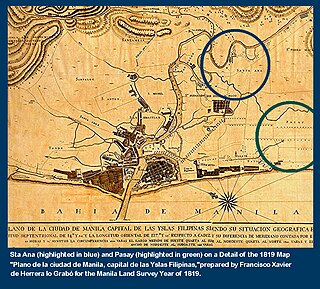Juan de Salcedo was a Spanish conquistador. He was born in Mexico in 1549 and he was the grandson of Miguel López de Legazpi and brother of Felipe de Salcedo. Salcedo was one of the soldiers who accompanied the Spanish colonization of the Philippines in 1565. He joined the Spanish military in 1564 for their exploration of the East Indies and the Pacific, at the age of 15. In 1567, Salcedo led an army of about 300 Spanish and Mexican soldiers and 600 Visayan (Filipino) allies along with Martín de Goiti for their conquest of Islamic Manila. There they fought a number of battles against the Muslim leaders, mainly against Tarik Sulayman. The Spanish officers, Mexican recruits and Filipino warriors coalesced in 1570 and 1571 to attack the Islamised areas of Luzon, for control of lands and settlements.

Rajah Sulayman, sometimes referred to as Sulayman III (1558–1575), was the Rajah or paramount ruler of the Rajahnate of Maynila, a fortified Tagalog Muslim polity which was a vassal to the Brunei Sultanate, on the southern half of the Pasig River delta, by the time Spanish colonizers arrived in the early 1570s.
Lakan Dula was the regnal name of the last Lakan of the pre-colonial Indianized Tondo polity when the Spaniards first conquered the lands of the Pasig River delta in the Philippines, in the 1570s.

San Andres is a district of Manila, Philippines. San Andres shares the Estero Tripa de Gallina as its western and northern border with the districts of Malate and Paco, respectively and Pedro Gil and Tejeron streets to the east with the district of Santa Ana. It borders the cities of Pasay and Makati in the south. The area is under the jurisdiction of the Fifth Congressional District of Manila, and includes the Manila South Cemetery, an exclave of the city.

Namayan, also called Sapa, Maysapan or Nasapan, and sometimes Lamayan, was one of three independent polities that dominated the banks of the Pasig River in the Philippines during the 16th century, just prior to the Spanish colonization of the Philippines.
The Battle of Bankusay, on June 3, 1571, was a naval engagement that marked the last resistance by locals to the Spanish Empire's occupation and colonization of the Pasig River delta, which had been the site of the indigenous polities of Maynila and Tondo.

In early Philippine history, the Tagalog Bayan of Maynila was a major trade hub located on the southern part of the Pasig River delta, where the modern day district of Intramuros currently stands.

Manila's history begins around 65,000 BC the time the Callao Man first settled in the Philippines, predating the arrival of the Negritos and the Malayo-Polynesians. The nearby Angono Petroglyphs, are then dated to be around 3,000 BC and the earliest recorded history of Manila, the capital of the Philippines, dates back to the year 900 AD as recorded in the Laguna Copperplate Inscription. By the thirteenth century, the city consisted of a fortified settlement and trading quarter near the mouth of the Pasig River, the river that bisects the city into north and south.
The geography of the City of Manila is characterized by its coastal position at the estuary of the Pasig River that flows to Manila Bay. The city is located on a naturally protected harbor, regarded as one of the finest harbors in Asia. The scarce availability of land is a contributing factor that makes Manila the densest populated city in the world.
Datu Magat Salamat was a Filipino historical figure best known for co-organizing the Tondo Conspiracy of 1587. He was one of at least four sons of Lakandula, and thus held the title of Datu under his cousin and co-conspirator Agustin de Legazpi, who had been proclaimed paramount ruler of Indianized kingdom of Tondo after the death of Lakandula, although the position soon became little more than a courtesy title.
Dayang Kalangitan is a legendary figure in early Philippine history who was said to be Dayang of the pre-Hispanic Indianized Philippine polity of Pasig. The eldest daughter of Rajah Gambang and ruling Pasig together with her husband, Rajah Lontok, legend considers her one of the most powerful rulers in the early history of the Tagalog people, and one of very few female leaders in early Philippine history.

Manila, also formerly known as Tondo until 1859, was a historical province in the Philippines, encompassing the former pre-Hispanic kingdoms of Tondo and Maynila. In 1898, it included the City of Manila and 23 other municipalities. It was incorporated into the Province of Rizal in 1901.

Claro M. Recto Avenue, more popularly known as simply Recto Avenue, is the principal commercial thoroughfare in north central Manila, Philippines. It spans seven districts just north of the Pasig River in what is generally considered Manila's old downtown area.

José Abad Santos Avenue is a major north-south arterial road located in the district of Tondo in northern Manila, Philippines. It is a divided roadway with four lanes in each direction running through the eastern edge of Tondo from the intersection with Rizal Avenue near the Manila Chinese Cemetery at its north end to Recto Avenue near the Tutuban railway station and Binondo in the south.
The Estero de Sunog Apog is one of the rivulets, known as esteros, which delineated the small islands which historically constituted the City of Manila and its predecessors, the Tagalog polities of Maynila and Tondo. These esteros, along with the larger rivers of Manila Bay and the Pasig River delta, originally formed an important connecting network which allowed the precolonial polities of that Tagalog and Kapampangan peoples.
In early Philippine history, the Tagalog Bayan of Cainta was a fortified upriver polity which occupied both shores of an arm of the Pasig River. It was located not far from where the Pasig River meets the Lake of Ba-i, and is presumed to be the present site of the municipality of Cainta, Rizal.
Agustin de Legazpi was a Filipino historical figure best known as the leader of the Tondo Conspiracy of 1587–1588, the last native ruler of Tondo, and the last individual to be hold the title of paramount ruler in any of the Indianized indigenous Tagalog polities of the Pasig River delta, although it had been reduced to little more than a courtesy title by the time of Agustin de Legazpi's execution.
The term "Lacandola Documents" is used by Philippine Historiographers to describe the section of the Spanish Archives in Manila which are dedicated to the genealogical records of the "Manila aristocracy" from the period immediately following European colonial contact. As of 2001, only one bundle of twelve folders remains in the archive, the rest having been lost, misplaced, or destroyed by various events such as the Japanese Occupation of Manila during World War II. The surviving bundle is labeled "Decendientes de Don Carlos Lacandola", and scholars use the term "Lacandola Documents" as an informal shortcut.









